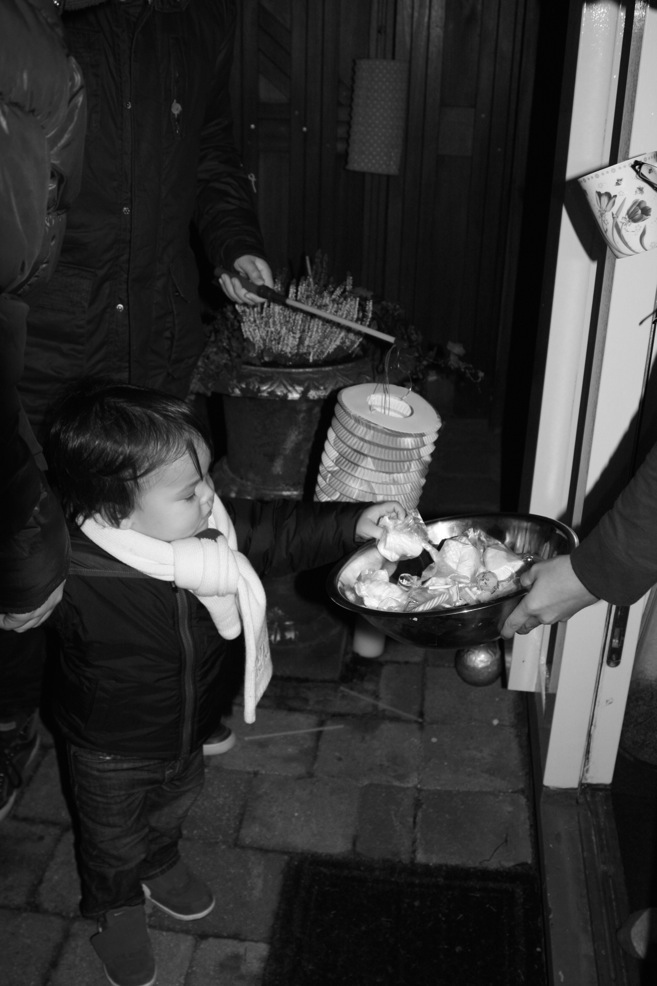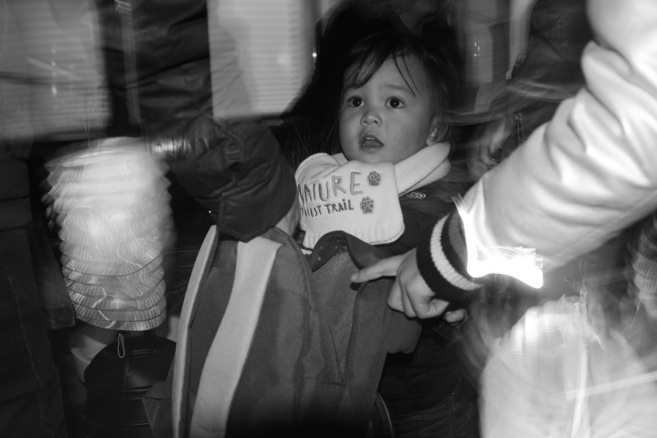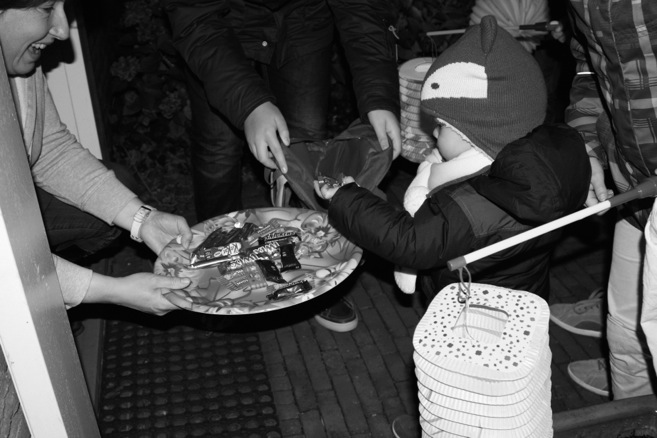
As an American mom living in the Netherlands, I’m trying to figure which traditions and holidays to continue celebrating and which ones to skip. One of the holidays I’m still on the fence about is Halloween. Ironically, despite its roots in Scotland and Ireland (Samhain), Halloween is a distinctly American tradition. The celebration of Halloween is a special day for lighthearted, community-sanctioned mischief, totally devoid of meaning and the best example of runaway consumerism. I personally love it.
While Halloween has taken over England, it still hasn’t reached the Netherlands. Outside the American expat santuaries of Amsterdam, Den Haag, and Utrecht, Halloween is simply another day. This year we decided not to bother with Halloween and rather celebrate the Dutch tradition of Saint Martin (Sint Maarten of Tours) instead. Being the only Americans in the village, it wasn’t a challenging decision to make. Plus, the two celebrations are actually quite similar under the premise that it’s a children’s holiday involving going door-to-door and recieving special treats or sweets.
In the spirit of spreading some Dutch cultural pride (my son is half-Dutch after all), here are four reasons to love the Dutch tradition of Sint Maarten (Saint Martin) in the Netherlands:

1. Saint Martin’s Day is celebrated every November 11 in honor of Martin of Tours.
Martin was a Roman soldier remembered for having a kind heart, being wise and readily helpful. Tradition and folklore has it that one day when he was approaching the gates of the city of Amiens (modern-day France), he met a scantily clad begger who was asking for alms. Martin impulsively cut his military cloak in half to share with the man. Later that night, he dreamed that it was actually Jesus with whom he shared his cloak with. Soon after, Martin left the army and was baptised.
Saint Martin is regarded as a friend of the children and patron of the poor in the Catholic tradition. November 11 is the day that Saint Martin passed away. Saint Martin’s day is traditionally an old harvest festival that is celebrated in many European countries and precedes the fasting period of Advent, which begins on November 12. Though the modern day celebration of Saint Martin in the Netherlands is now non-secretarian, I love how I can still share the story of a random act of kindness.
2. Part of the celebration involves an informal parade of hand-crafted, or store bought lanterns made out of paper as children go around the neighborhood, door to door.
Traditionally, children’s lanterns were made out of hollowed out sugar beets or turnips hanging on a string tied to a wooden stick. Now children often decorate their own paper lanterns at school, or purchase it at the local grocery store. As soon as the sun sets, which often feels like around 4:30 p.m., small groups of Dutch children make processions around their neighborhoods with their latterns.
There’s something romantic and nostalgic about seeing little children with little paper latterns going door-to-door and lighting up the dark, cold “winter” night. The “11th day of the 11th month” after all, is traditionally considered to be the first day of “winter” according to the agricultural calendar.
3. “Earning” their treats by making them sing for it.
Rather than saying “Trick-or-Treat”, Dutch children are expected to sing songs.
The most popular song is:
Sint Maarten, Sint Maarten (Saint Martin, Saint Martin)
De Koeien hebben staarten (The cows have tails)
De Meisjes hebben rokjes aan (The girls are wearing skirts)
Daar komt Sinte Maarten aan (There comes Saint Martin)
My favorite is the one that goes:
11 november is de dag,
dat mijn lichtje, dat mijn lichtje,
11 november is de dag,
dat mijn lichtje schijnen mag.
12 november is de dag,
dat de tandarts, dat de tandarts,
12 november is de dag,
dat de tandarts boren mag.
There’s something more honest, wholesome and innoncent about singing a “song” in exchange for some sweets rather than a mischivious “threat”.
4. Absolutely no costumes, no fuss, no organized fun. Money saved.
For parents who don’t like fuss, wasteful preparations, and spending money they may not have, Sint Maarten seems like a dream. Since children often make these paper latterns at school, it’s also much less of a time commitment and a hassel.
Okay, let’s stop beating around the bush here. Saint Martin is a great way for us (American expat parents) to get a bit of “Halloween” without having to spend money on costumes.
Extra Random Trivia for Utrecht Lovers:
Have you ever taken the time to look at the coat of arms and the city flag of Utrecht? Did you know that it was made in honor of Saint Martin, the patron saint of Utrecht? As my “historian” Dutch husband loves to point out, the red part is the Roman coat and the white part is the undergarment of Saint Martin.
As much as I love Halloween, I am relieved that it doesn’t exist in the Netherlands. In fact, neither is Sint Maarten. Sint Maarten is practiced only a handful of pockets in the Low Countries – traditionally in Utrecht, Limburg, Noord-Holland, Groningen, Friesland, Drenthe and Noord Brabant. Perhaps it’s about time that the Dutch embrace this beautiful tradition as an entire country?
(Photos from last year’s Sint Maarten celebration)


